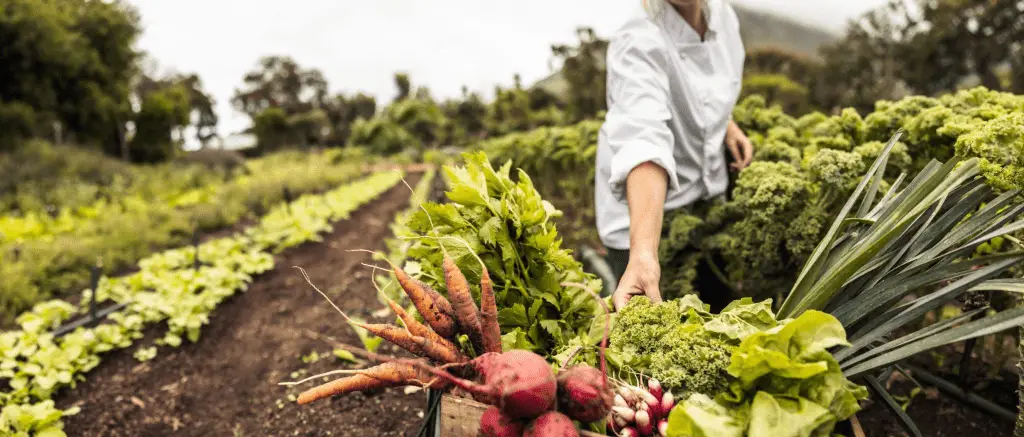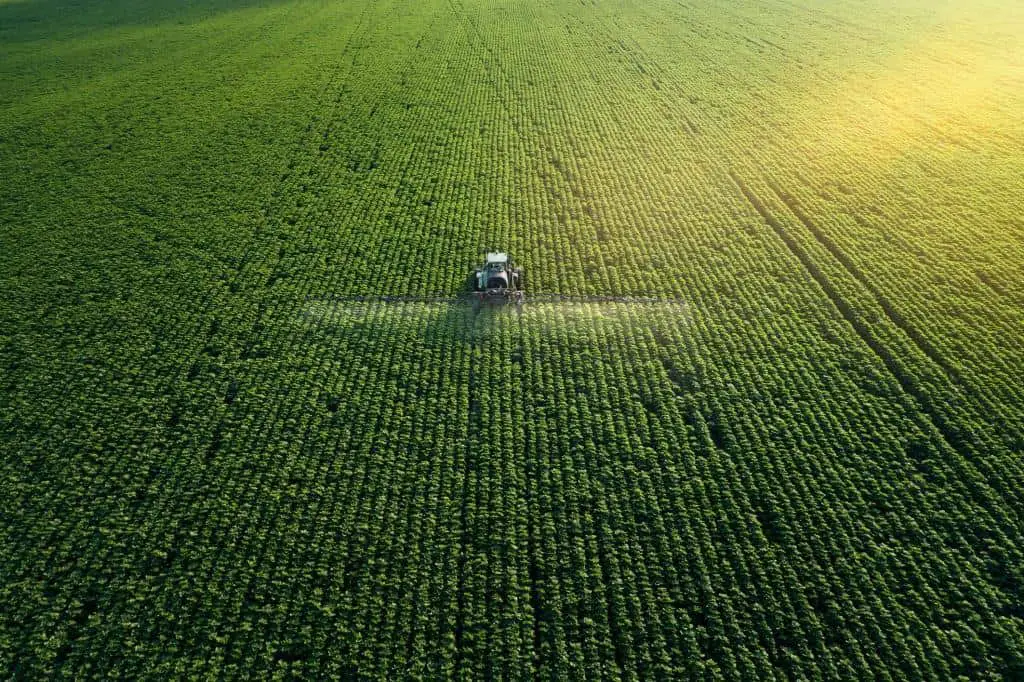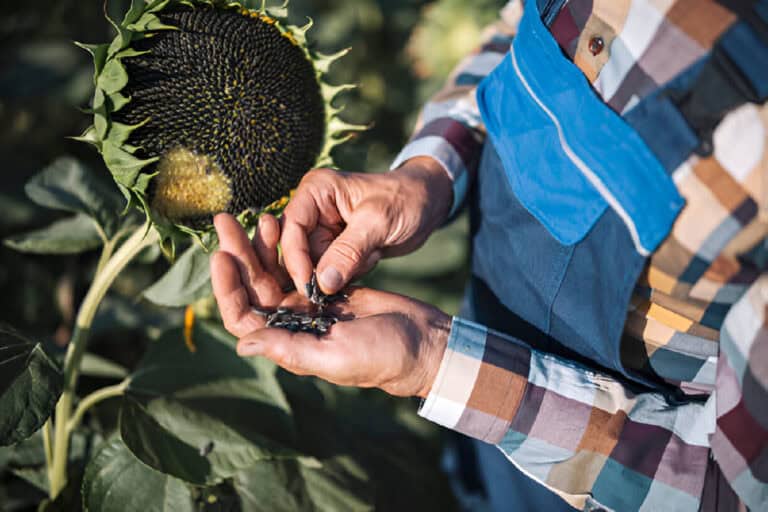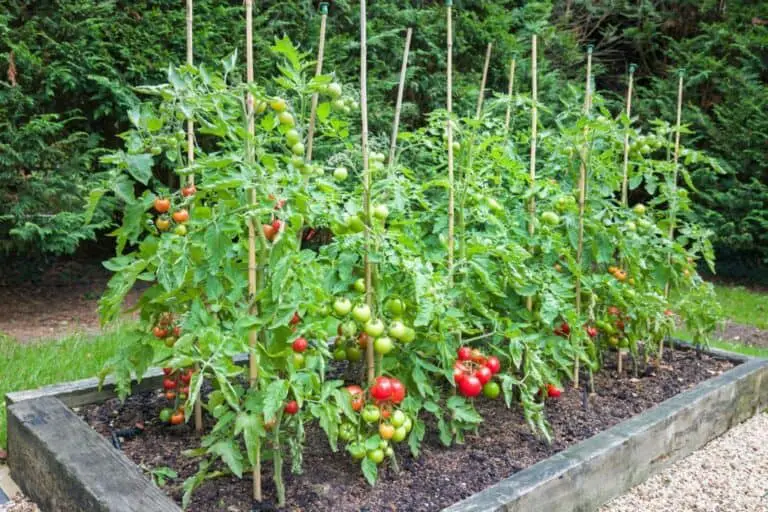Commercial Farming vs Subsistence Farming: What’s the Difference?

Farming has been a fundamental part of human civilization for thousands of years. It provides sustenance and livelihood to communities around the world. Over time, two distinct farming practices have emerged: commercial farming and subsistence farming. These two approaches differ significantly in their goals, methods, and impacts on individuals and society.
Understanding the differences between these two farming methods is essential to understanding global agriculture.
This article compares commercial and subsistence farming, highlighting their differences and implications. It’s time to sow the seeds of knowledge and reap a bountiful harvest of insights. Let’s dig in!
Commercial Farming

Commercial farming, also known as agribusiness or industrial farming, refers to large-scale agricultural production aimed at generating profits. It involves the cultivation of crops or the rearing of animals on a massive scale with the intention of selling the products in the market.
The primary objective of commercial farming is to maximize productivity and economic returns. Let’s delve into some of the defining features of commercial farming:
1. Scale and Scope
Commercial farming operates on a large scale, utilizing extensive land areas, advanced machinery, and technology-intensive production systems. The goal is to maximize output through efficient resource allocation, standardized practices, and economies of scale. Large commercial farms often specialize in specific crops or livestock to streamline operations and optimize yields.
2. Market Orientation
One of the key characteristics of commercial farming is its strong market orientation. Commercial farmers cultivate or raise crops and livestock that have a high demand in the market. They carefully analyze market trends, consumer preferences, and price fluctuations to make informed decisions about what to produce. By aligning their production with market demands, commercial farmers aim to achieve higher profits and competitiveness.
3. Intensive Use of Inputs
Commercial farming relies heavily on the use of modern inputs such as synthetic fertilizers, pesticides, and high-yield crop varieties. These inputs are used to enhance productivity and protect crops from pests and diseases.
Moreover, commercial farmers often employ advanced irrigation systems, machinery, and automation technologies. This improves efficiency and reduces labor requirements.
4. Specialization and Division of Labor
Given the scale of operations in commercial farming, specialization and the division of labor play a crucial role. Different tasks are assigned to specific individuals or groups based on their expertise, resulting in increased efficiency and productivity.
This specialization extends beyond the farm itself and encompasses various supporting industries, such as seed production, machinery manufacturing, and food processing.
5. Capital Intensity
Commercial farming requires substantial capital investment due to the need for modern equipment, land acquisition, and technological advancements. Capital-intensive nature often leads to consolidation, with small-scale farmers struggling to compete against larger, more financially equipped operations. This consolidation can have significant socioeconomic implications in rural communities.
6. Environmental Considerations
While commercial farming has undeniable economic benefits, it also raises environmental concerns. The intensive use of chemical inputs can lead to soil degradation, water pollution, and loss of biodiversity.
Furthermore, large-scale monoculture practices can deplete soil nutrients and make crops vulnerable to pests and diseases. Balancing economic gains with environmental sustainability is a critical challenge for commercial farming.
Subsistence Farming
In contrast to commercial farming, subsistence farming focuses on meeting the basic needs of a farmer’s family or community. It involves small-scale agricultural production, where the primary goal is self-sufficiency rather than profit generation.
Here are the key characteristics of subsistence farming:
1. Self-Sufficiency
Subsistence farmers cultivate crops and rear animals to fulfill the dietary requirements of their households. They prioritize food security and direct consumption over market sales. The produce is typically diverse, including staple crops, fruits, vegetables, and livestock products. Surplus produce may be traded or sold locally to meet other essential needs.
2. Limited Use of Inputs
Subsistence farming relies on traditional farming methods and techniques, with limited use of modern inputs such as fertilizers and pesticides. Farmers often practice organic farming, utilizing natural fertilizers like manure and compost. This approach helps maintain soil fertility and reduces dependence on external inputs.
3. Low Mechanization
Subsistence farming is characterized by low mechanization levels compared to commercial farming. Farmers rely on manual labor, traditional tools, and simple machinery like hand tools and animal-drawn implements. This reliance on manual labor promotes a strong sense of community and family involvement in agricultural activities.
4. Crop Diversity
Subsistence farmers cultivate a variety of crops to ensure dietary diversity and minimize the risks associated with crop failures or pest outbreaks. They often adopt intercropping or mixed cropping techniques, where different crops are grown together on the same piece of land. This diversification enhances resilience and helps maintain a sustainable farming system.
5. Sustainable Practices
Due to the emphasis on self-sufficiency and long-term resource availability, subsistence farming practices are generally more sustainable and environmentally friendly. Farmers tend to follow traditional knowledge and conservation practices passed down through generations, promoting soil health, water conservation, and biodiversity preservation.
6. Cultural Significance
Subsistence farming is deeply intertwined with cultural traditions and local knowledge systems. It plays a vital role in preserving cultural heritage, fostering community bonds, and maintaining a connection to the land. The knowledge and skills associated with subsistence farming are often passed on through oral traditions and hands-on learning experiences.
Commercial Farming vs Subsistence Farming: Comparison and Implications
Now that we have explored the key differences between commercial farming and subsistence farming, let’s consider the implications of these practices:
Economic Impact
Commercial farming, with its focus on productivity and market orientation, can contribute significantly to the economy. It generates employment opportunities, stimulates rural development, and contributes to national income through exports. However, it can also lead to income disparities and the marginalization of small-scale farmers who struggle to compete.
Subsistence farming, on the other hand, provides immediate food security and livelihood for farming households. While it may not contribute substantially to the cash economy, it helps maintain local food systems and preserves traditional farming practices. However, subsistence farmers may face challenges in accessing markets and modern amenities.
Environmental Impact
Commercial farming, particularly intensive industrial practices, can have adverse environmental effects. The extensive use of chemical inputs can lead to soil erosion, water pollution, and the degradation of ecosystems. The conversion of natural habitats to large-scale monocultures can result in the loss of biodiversity and the disruption of ecological balance.
Subsistence farming, with its focus on sustainable practices and limited use of external inputs, has a comparatively lower environmental footprint. Farmers often maintain a harmonious relationship with nature, preserving local ecosystems and biodiversity. However, population growth and increased pressure on land may lead to unsustainable practices in some regions.
Food Security and Nutrition
Commercial farming, by producing large quantities of specific crops, can contribute to food availability in the market. It enables access to a wide variety of food products throughout the year, addressing the demands of a growing population. However, the focus on profit generation may lead to the neglect of nutritious and culturally significant crops.
Subsistence farming plays a critical role in ensuring food security at the household and community levels. It promotes diverse and nutritious diets, with a focus on locally adapted crops. Subsistence farmers often have a deep understanding of the nutritional value of different crops and prioritize their cultivation accordingly.
Social and Cultural Significance
Commercial farming can bring socioeconomic changes to rural communities, transforming traditional agrarian societies. It may displace small-scale farmers and change community dynamics, but it also creates jobs. The loss of traditional knowledge and cultural practices can have profound social implications.
Subsistence farming, deeply entrenched in local communities and cultural traditions, fosters social cohesion and preserves indigenous knowledge systems. Many farming communities pride themselves on their connection to the land and heritage. Subsistence farming practices often promote cooperative relationships, mutual support, and the sharing of resources within the community.
Challenges and Opportunities
Commercial farming faces challenges such as dependency on external markets and concerns regarding environmental sustainability. Reliance on global markets can expose commercial farmers to fluctuations in demand and prices. Additionally, the intensive use of resources and chemicals raises concerns about the long-term viability of this farming method.
Subsistence farming, on the other hand, faces challenges related to limited access to resources and technology. Small-scale farming often lacks adequate infrastructure, financing, and training. They are also vulnerable to climate change and market fluctuations, which can impact their food security and economic stability.
Despite the challenges, both commercial farming and subsistence farming present opportunities for growth and improvement. Organic and precision agriculture can reduce environmental impact and increase long-term profitability in commercial farming. Integration of technology, such as data analytics and automation, can optimize resource management and increase efficiency.
Subsistence farming can benefit from support systems that empower small-scale farmers and promote local food systems. Initiatives focusing on capacity building, access to finance, and improved infrastructure can enhance productivity and livelihoods. Embracing agroecology principles, which emphasize ecological balance and biodiversity, can enhance sustainability and resilience in subsistence farming.
Future Trends
The future of commercial farming will likely witness a shift towards sustainable practices and organic farming. With increasing consumer awareness and demand for environmentally friendly products, commercial farmers are expected to adopt methods that reduce chemical use, conserve natural resources, and prioritize animal welfare.
Embracing precision agriculture, which employs technology to precisely manage inputs, water usage, and crop health, will lead to more efficient and sustainable farming practices.
In the realm of subsistence farming, there is a growing recognition of the importance of supporting small-scale farmers and local food systems. Governments, organizations, and consumers are increasingly valuing the contributions of subsistence farming to food security, cultural heritage, and environmental conservation. Efforts to provide access to markets, improve infrastructure, and enhance technical skills will empower subsistence farmers and enable them to thrive.
FAQs
Which farming method is more prevalent globally?
Commercial farming is more prevalent globally, especially in developed countries and regions with advanced agricultural systems. However, subsistence farming remains significant in many developing countries, particularly in rural areas where access to resources and market opportunities is limited.
Can subsistence farming evolve into commercial farming?
Yes, subsistence farming can evolve into commercial farming. With improved access to resources, technology, training, and market opportunities, subsistence farmers can transition to commercial farming. However, this transformation requires significant investments, supportive policies, and access to markets to ensure sustainability and profitability.
What are the main advantages of commercial farming?
The main advantages of commercial farming include the potential for higher profits, economies of scale, access to advanced technology and resources, and the ability to meet market demands. Commercial farming can contribute to economic growth, employment generation, and food supply for larger populations.
What are the benefits of subsistence farming?
Subsistence farming provides self-sufficiency in terms of food production and contributes to food security at the household level. It preserves traditional knowledge and practices, strengthens local communities, and promotes cultural heritage. Subsistence farming also has a lower environmental impact due to its reliance on traditional and sustainable farming methods.
Is commercial farming environmentally sustainable?
Commercial farming can have significant environmental challenges due to its large-scale operations and intensive use of resources. However, the adoption of sustainable practices, such as organic farming, precision agriculture, and conservation measures, can mitigate the environmental impact and enhance the sustainability of commercial farming.
How does subsistence farming impact local communities?
Subsistence farming plays a crucial role in sustaining local communities. It contributes to food security, cultural preservation, and social cohesion. Subsistence farming often promotes the use of local resources, supports local markets, and reinforces traditional farming practices, which in turn helps to maintain community identity and resilience.






